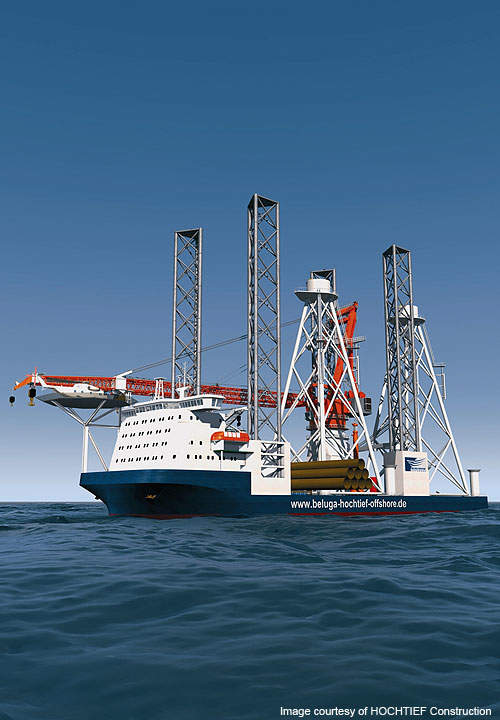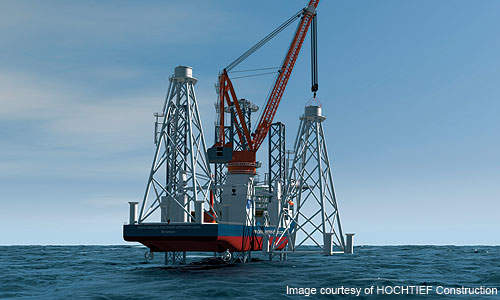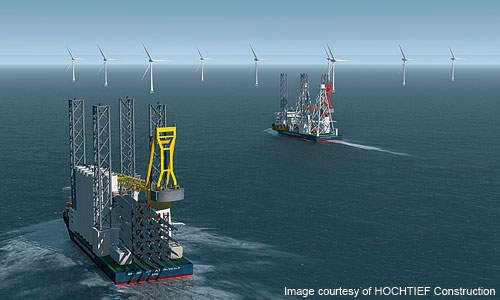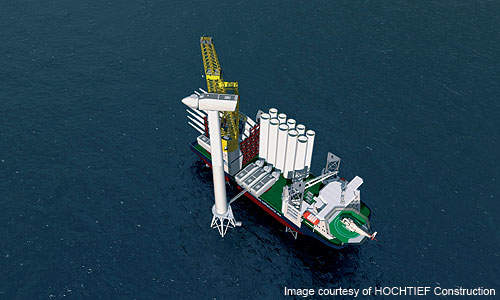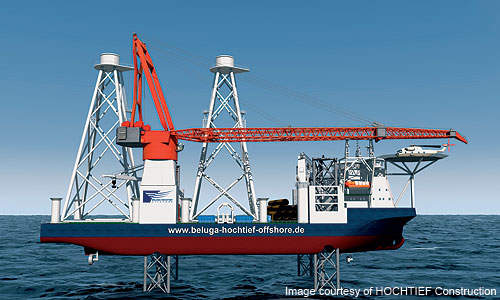
Beluga Shipping and Hochtief Construction formed a joint venture named Beluga Hochtief Offshore in April 2010 to develop a specially designed heavy-lift jack-up vessel named Vidar. The new self-propelled vessel was built by Poland’s Crist shipyard. Steel cutting for the vessel took place in August 2010. The ship was delivered in 2013.
The vessel was built for use in the offshore wind turbine market. The ship loads, transports and installs wind turbines at offshore locations. It is also used to maintain and repair the turbines. The vessel helps in reducing the assembly and services duration needed for installing offshore wind turbines, thereby increasing productivity.
Beluga Hochtief Offshore is the operator and leaser of the vessel. Hochtief uses the vessel for carrying out offshore construction works. The first offshore construction project in which the new vessel was employed was the Global Tech I Offshore Wind Farm. The company installed 80 turbines for the new farm which was constructed about 110km away from Cuxhaven, Germany in the North Sea. The vessel installed the turbines with a height of about 120m in water depth of 50m.
Beluga Hochtief Offshore also has plans to buy a second ship as demand is increasing for specialised equipment in the offshore sector. According to estimates made by the EU, investments in offshore projects are expected to increase to more than €200bn by 2030.
Offshore wind capacity is also expected to increase to 15GW in the next six years.
The main hurdle in the development of offshore projects, however, is the absence of specific equipment for offshore assembly of wind turbines. The new vessel was constructed to address this problem.
Design
The jack-up vessel was designed by Hamburg-based Overdick. The company developed the concept and provided detailed engineering for the project.
Extensive resistance, propulsion, seakeeping and manoeuvring tests were conducted by Marin. The company also carried out thruster interaction tests to determine station-keeping in various conditions including wind, waves and current.
Large scale model tests were conducted by Marin to examine the current loads on the legs of the vessel. To carry out these tests a 1:15 scale model of one leg measuring a length of 4m was built.
The tests conducted by Marin revealed that the unique structure of the vessel enabled it to be deployed in rough seas. The vessel can also be used in the oil and gas sectors.
With a length of 90m, the vessel stands on four legs. These legs have a triangular lattice cross section. The jacking system of the vessel is rack and pinion with a jacking speed of about 0.83m per minute.
The length of the ship’s hull is 140.4m and width is 41m. Height of the hull is 9.5m.
The ship has a powerful drive and a maximum speed of 12kt while the service speed is 10.2kt. It is equipped with a dynamic positioning system which complies with DP2 requirements. Maximum operating draft of the ship is 6.3m.
Facilities
The ship is equipped with a main crane around one leg. The crane has a lifting capacity 1,200t at a maximum radius of 27.5m and its working load limit is about 1,500t. The maximum wind speed for operating the crane is 18m/s.
A helicopter deck with a diameter of 20.88m is also a part of the ship. It is suitable for Sikorsky S92 with a maximum take-off weight of 12.8t.
Accommodation
The vessel can accommodate 90 persons including crew. Cabins of the ship can be used as single or double. The vessel is designed for 200 people.
Cargo
The vessel has a lift capacity of up to 24,500t. It is designed to carry seven wind turbine generators, two jackets of up to 1,000t including piles, four jackets of up to 600t including piles and seven monopolies of up to 500t.

